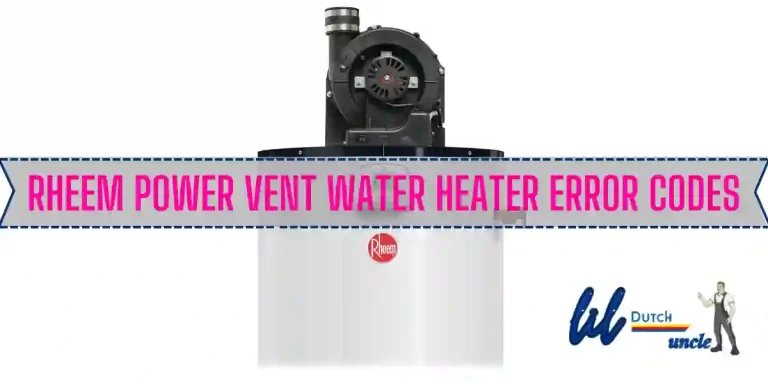
Now, understanding an error code doesn’t have to be a head-scratcher. “SE” in Bradford White’s line of water heaters stands for “sensor error,” indicating that there’s an issue with one or more of the sensors inside the unit. These sensors play a crucial role in maintaining the desired water temperature by monitoring and providing feedback to the system. Without them functioning correctly, you’re likely to experience water temperature issues. Let’s delve into what causes this error, how you can address it, and what steps you can take to prevent it in the future.
Understanding the Error Code SE
When your Bradford White water heater displays the SE code, it’s essentially waving a little red flag to let you know there’s a problem with its sensors. Think of these sensors like the watchful eyes and ears of your water heater. They constantly measure various parameters, such as temperature and pressure, to ensure that your water heater operates smoothly. If one of these sensors fails to deliver accurate readings, it can disrupt the entire heating process, which might leave you with less-than-comfortable shower temperatures or worse, no hot water at all.
So, why do these sensors fail? There are quite a few reasons. Sometimes, it’s due to a buildup of minerals or sediments inside the tank. Just like how cholesterol can clog up arteries, sediment can interfere with the sensors. Other times, it could be an electrical issue, such as a faulty wire or a bad connection. Environmental factors, like corrosion or moisture, may also play a part.
What can you do when faced with this error? Before you start, remember that while some causes are simple fixes, others may require professional assistance. Begin by turning the power off to the unit to ensure safety. Then, check for any obvious signs of damage or disconnection around the sensor wiring. If you’re comfortable, you might try cleaning the sensors gently. But if these steps don’t resolve the problem, it might be time to call an HVAC professional who can diagnose and fix electrical or internal component issues.
Common Causes and Solutions
One of the most frequent culprits behind an SE error code is sediment buildup. Over time, water that flows through your heater can deposit small amounts of minerals, like calcium and magnesium, which accumulate at the bottom of the tank. This is especially common in areas with hard water. These deposits can form a barrier between the sensors and the water, making it difficult for the sensors to get accurate readings. You can think of it like trying to talk through a thick wall; communication becomes obstructed.
To combat sediment issues, routine maintenance is key. Flushing your water heater tank once every six months can help. This process involves draining the tank to remove the sediment. It’s like giving your heater a deep cleanse, ensuring that its sensors can function unimpeded. It’s an easy task for many, but if you’re unsure, a professional plumber can perform this service.
Another contributor to sensor errors might be electrical faults. For instance, a loose wire or corroded connection can prevent the sensors from communicating with the control board of the heater. If sediment cleaning doesn’t resolve the issue, it might be worth examining the electrical connections. Ensuring that all wiring is intact and secure can sometimes resolve the SE error. Just remember, if you’re not experienced with electrical work, it’s best to leave it to the professionals to avoid any risk of injury or further damage.
Preventing Future Sensor Errors
Prevention is always better than cure, especially when it comes to your water heater. The good news is that you can take steps to minimize the chances of encountering an SE error again. Regular maintenance, as mentioned earlier, is a great start. Flushing the tank will keep sediment at bay and help your water heater run efficiently. Think of it like regular oil changes for your car—simple routines that extend the life of your investment.
Moreover, checking and cleaning the sensors periodically can also ensure they’re free of dirt or buildup. A quick visual inspection every few months can spot any potential issues before they escalate into full-blown problems. This proactive approach can save you the hassle of unexpected cold showers and perhaps some money on professional repairs.
Lastly, consider installing a water softener if you live in an area with hard water. Water softeners reduce the mineral content in the water, which can significantly minimize sediment buildup in your heater. It’s similar to using a filter to keep your appliances clean and running smoothly—protecting them from the inside out.
By staying vigilant and proactive with your water heater maintenance, you can keep that pesky SE error code at bay, ensuring a steady stream of hot water for all your needs.